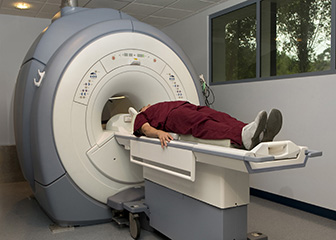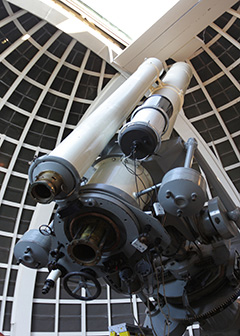
Physics research has led to advances in many fields, such as the development of magnetic resonance imaging technology used in medicine.
Physicists and astronomers study the fundamental nature of the universe, ranging from the vastness of space to the smallest of subatomic particles. They develop new technologies, methods, and theories based on the results of their research to deepen our understanding of how things work and contribute to innovative, real-world applications.
Duties
Physicists and astronomers typically do the following:
- Develop scientific theories and models to explain the properties of the natural world, such as atom formation
- Plan and conduct scientific experiments and studies to test theories and discover properties of matter and energy
- Write proposals and apply for research grants
- Do complex mathematical calculations to analyze physical and astronomical data, such as finding new planets in distant solar systems
- Design scientific equipment, such as telescopes and lasers
- Develop computer software to analyze and model data
- Write scientific papers that may be published in scholarly journals
- Present research findings at scientific conferences and lectures
Physicists explore the fundamental properties and laws that govern space, time, energy, and matter. Some physicists study theoretical areas, such as the fundamental nature of atoms and molecules and the evolution of the universe. Others design and perform experiments with sophisticated equipment such as particle accelerators, electron microscopes, and lasers. On the basis of their observations and analysis, they try to discover and formulate laws that explain the forces of nature, such as gravity, electromagnetism, and nuclear interactions. Others apply their knowledge of physics to practical areas, such as the development of advanced materials and medical equipment.
Astronomers study the motions, compositions, origins, and other properties of planets, stars, galaxies and other celestial bodies. They use ground-based equipment, such as radio and optical telescopes, and space-based equipment, such as the Hubble Space Telescope, to make observations and collect data. Some astronomers focus their research on objects in our own solar system, such as the sun or planets, while others study distant stars, galaxies, and phenomena such as neutron stars and black holes.
Many physicists and astronomers do basic research with the aim of increasing scientific knowledge. For example, they may develop theories to better explain what gravity is or how the universe was formed.
Others do applied research, using knowledge gained from basic research to develop new devices, processes, and other practical applications. Their work may lead to advances in areas such as energy, electronics, communications, navigation, and medical technology. For example, lasers are now used in surgery and microwave technology is now in most kitchens.
Astronomers and physicists typically work on research teams with engineers, technicians, and other scientists. Some senior astronomers and physicists may be responsible for assigning tasks to other team members and monitoring their progress.
While all physics involves the same fundamental principles, physicists generally specialize in one of many subfields. The following are examples of how physicists may specialize:
Condensed matter physicists study the physical properties of condensed phases of matter, such as liquids and solids. They study phenomena ranging from superconductivity to liquid crystals.
Astrophysicists study the physical properties of the universe, such as its physical expansion. The work of astrophysicists is closely related to that of astronomers. Astrophysics is often classified as a subfield of both astronomy and physics.
Particle and nuclear physicists study the properties of atomic and subatomic particles, such as quarks, electrons, and nuclei, and the forces that cause their interactions.
Medical physicists work in healthcare and use their knowledge of physics to develop new medical technologies and radiation-based treatments. For example, some develop better and safer radiation therapies for cancer patients. Others may develop more accurate imaging technologies that use radiation, such as magnetic resonance imaging (MRI) and ultrasound imaging.
Atomic, molecular, and optical physicists study atoms, simple molecules, electrons, and light and their interactions. Some look for ways to control the states of individual atoms, which might allow further miniaturization and new materials and computer technology.
Plasma physicists study plasmas, which are considered a distinct state of matter and occur naturally in stars and interplanetary space and artificially in neon signs and plasma screen televisions. Many plasma physicists study ways to create possible fusion reactors that might be a future source of energy.
Growing numbers of physicists work in interdisciplinary fields, such as biophysics, chemical physics, and geophysics. For more information, see the profiles on biochemists and biophysicists and geoscientists.
Many people with a physics or astronomy background become professors or teachers. For more information, see the profile on postsecondary teachers.














